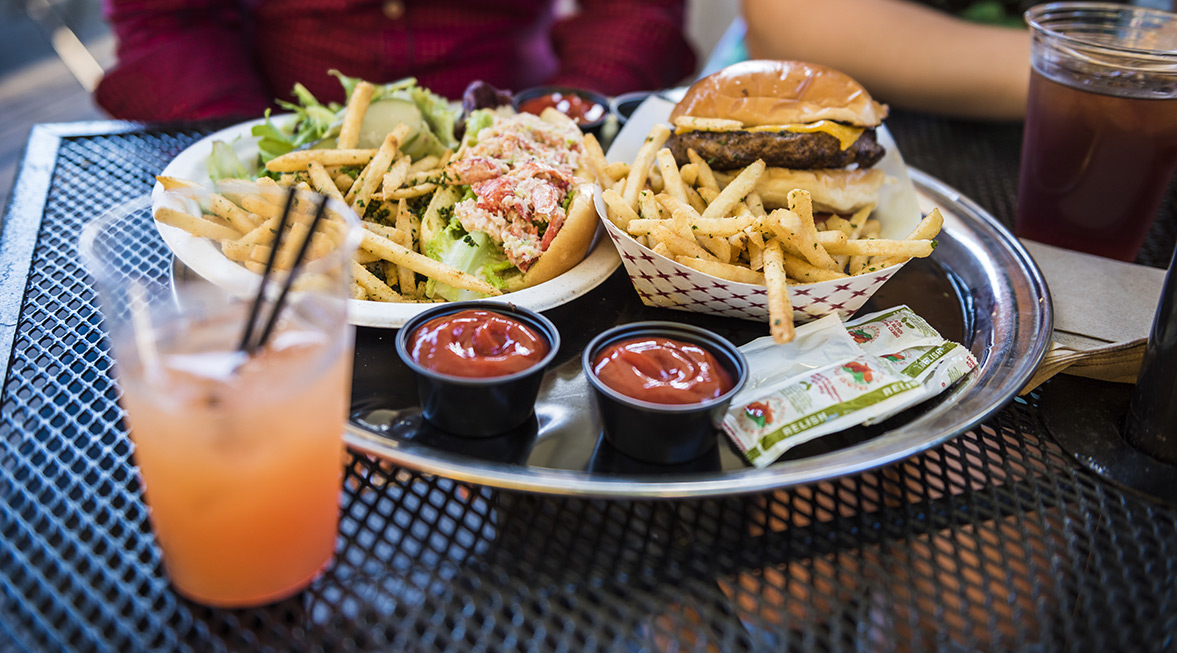Quick Service Restaurant chains (QSRs) invest a strong percentage of their sales into marketing. They have to, because it’s such a competitive space. Think about the multiple options you have for lunch or dinner on any given day, and you can see why these marketers might need to be a little more aggressive in their aim to beat the competition.
Brand advertising at the national level covers reach and scale, but local campaigns give consumers an exact location to actually get that nationally advertised product. Local and national work hand in hand to address more of the customer journey: national ads focus on awareness; local ads run simultaneously and engage the consumer at the moment they’re ready to buy a meal.
While brand advertising for these chains dominates TV, direct mail, out-of-home and radio, it’s their local campaigns that really help restaurants gain and keep the lead. Location data helps make campaigns more strategic: at the local level, it’s this data that fuels a more powerful call to action. A consumer may see 50 commercials for McDonald’s over the course a few days, but it’s the targeted offer on their smartphone for a limited time only specialty coffee that’s most likely to get them in the door on the way back to the office after an early offsite meeting.
For corporate-owned QSRs that engage in co-op marketing, location data can make national campaigns much more effective. Local marketers know the unique character of their DMA, and there may be aspects of the national campaign that won’t resonate with the locals. It could be that your store’s customers prefer Hawaiian Pizza to Margherita, or that you need to change that “you” in the call to action to a “y’all.” Perhaps that Jets promotion needs to shift to the Giants in your corner of the tri-state area. Local data will give you that insight and allow you to target your community more effectively. Local creative can also feature a map that provides directions to the nearest restaurant, adding more convenience for the consumer. This next level call to action can’t be executed through TV or radio creative.
It takes precise, accurate data to make those local offers the traffic-drivers they need to be. A popular QSR franchise may have a store on nearly every block of a metropolitan area, and inaccurate data could drive consumers into the wrong storefront. Unfortunately, there is a lot of inaccurate data out there. Less-than-scrupulous publishers know that advertisers will pay more for data that has location tied to it, so they’re eager to sell that data, and they’re not always honest about the quality or the source.
Marketers trust Blis because we only use cleansed GPS data. We have incredibly high standards for the data that enters our pool, particularly as it pertains to accuracy and precision. Stringent filters catch any inaccurate or fraudulent data well before it reaches our stores. We’re confident that we offer the highest quality, most accurate and most precise location data available.
The QSR space is among the most competitive today. Putting location data to work for campaigns can help restaurants stand out on a crowded street – and an increasingly crowded marketplace. Even more importantly, location can make it easy for marketers to engage with local audiences, and easy for customers to find their way into a restaurant to redeem an offer that’s been crafted just for them.
This series will offer helpful insights, tips and real-life examples of how location data can help QSRs stay ahead of the competition. Follow the tag #QSRseries for more posts to come.




